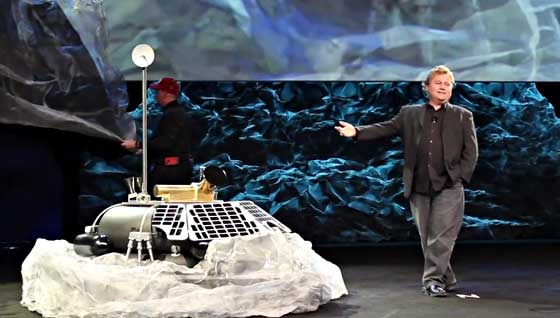As Moon Express makes steady progress towards trying to win the Google Lunar X Prize to land a robotic spacecraft on the Moon, the Silicon Valley firm has just purchased three launches for its lunar lander spacecraft from Kiwi company Rocket Lab, who has previously made headlines for its 3D printed, battery-powered rocket engine. The contract will see Moon Express send smaller versions of its MX-1 lunar lander to the moon aboard Rocket Lab’s electron small launch vehicle.
The Google Lunar X Prize hopes to galvanize the private space industry with a $20 million prize for a company that demonstrates the possibility of a robotic lunar landing. As of right now, no firm has secured a launch contract, which could see the contest end on December 31, 2015, if no entrant is successful. However, if a contract has been secured by one of the contestants by the end of the year, the Lunar X Prize will be extended until 2017. For a chance to push the contest deadline further, Moon Express has reached out to New Zealand’s Rocket Lab.
Rocket Lab’s 3D printed Rutheford rocket engine was first unveiled at the 31st Space Symposium in Colorado, USA earlier this year. The engine would be one of ten to carry the company’s Electron rocket into space, using brushless DC motors and lithium-polymer batteries to turbopump liquid rocket fuel. This system has an estimated cost per launch of $4.9 million, which is 95% less than current launch systems, but the company will first need to actually send its Electron rocket into space, with the first launch set for sometime later this year.
If successful, Bob Richards, co-founder and CEO of MoonEx, believes that Rocket Lab should have no issue with its proposed lunar lander design, much smaller than their previous spacecraft, modeled after NASA’s own Lunar Atmosphere and Dust Environment Explorer. The firm, which has made great progress in its work by partnering with NASA in the past, has been able to shrink its lander due to technological advancements. Now, with the Electron launch vehicle, they’ll be able to establish their first mission to launch it to the moon.
The first two missions with Rocket Lab are scheduled to take place in 2017 in an attempt to win the $20 million. To succeed, the spacecraft must land on the moon, travel 500 meters across its surface, and transmit photos and videos back to Earth. In contrast to other team designs, which envision rovers to make the 500 meter trek, the MX-1 using a hopping system to go the distance. To demonstrate the seriousness of their plans, MoonEx has purchased the three launches, with the subsequent launches set as a back-up in case the first should fail. Richards explains, “If we fall short on the first, we’ll do it again on the second, and if we fall short on the second, we’ll do it again on the third.”
If the mission is successful, however, the company will be able to sell the space to scientists or space agencies. Richards continues, The contract with Rocket Lab includes options for two additional Electron launches. “I look at the first landing on the moon as the space equivalent of the four-minute mile. It’s going to change the definition of what’s possible. We may have a problem satisfying all the demand, not a lack of customers.”
MoonEx is still waiting to hear back from the X Prize Foundation for approval of the contract and, therefore, an extension of the Prize, but the deal between the two companies is the first launch contract to be announced by one of the 16 teams taking part in the Google Lunar X Prize.



